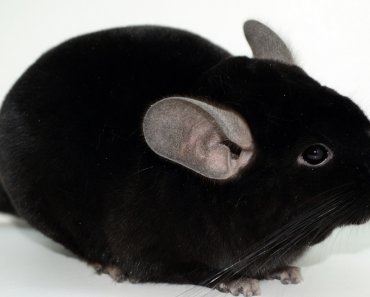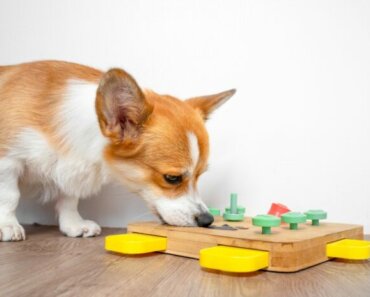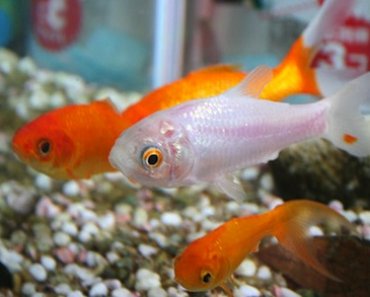Find out why obesity is so bad for your dog or cat, and help her lose weight by addressing exercise and diet, including some nutritious low-calorie recipes.
Obesity in dogs and cats has reached an all-time high. The Association for Pet Obesity Prevention states that more than 50% of our dogs are overweight. Meanwhile, 25% of cats in the Western world are overweight, according to the United States National Research Council. Let’s look at the signs of obesity in dogs and cats, and why it’s so bad for their health. We’ll also discuss the best approach to this common problem, and present some easy and healthy low-calorie recipes that can help your best friend shed some weight.
WHY IS OBESITY SO BAD?
Obesity causes many of the same problems in our animals as it does in us. According to Dr. John Rush, Professor of Clinical Sciences at Tufts University School of Veterinary Medicine, overweight dogs often have extra fat deposits on their chest walls or inside their chest cavities, placing an additional burden on their cardiovascular and respiratory systems. One of the most common problems caused or aggravated by obesity is arthritis. An overweight animal can also experience orthopedic problems, from herniated discs to ruptured stifle ligaments. In addition, obesity can contribute to heat intolerance, skin problems, and even surgical complications leading to longer recovery times. Overweight cats are at particular risk for diabetes mellitus and lower urinary tract disease. Hepatic lipidosis, a severe form of liver failure, typically occurs in obese cats that have undergone a brief period of stress.
Keep in mind: Treating feline obesity needs to be done cautiously, and always under the care of a veterinarian.
WHAT CAN YOU DO TO COUNTERACT OBESITY?
Obesity in dogs and cats can be a challenging problem to treat, but there are ways to help get your companion back on track towards health and vitality.
Before any weight management program is put into place, a trip to the veterinarian is in order. Your dog or cat’s medical history should be considered, and a thorough physical examination performed, including a complete blood panel and urinalysis, to ensure that endocrine diseases such as hypothyroidism, insulin imbalance, hyperadrenocorticism, or Cushing’s disease aren’t causing her weight gain.
Once these disorders have been ruled out, your vet can help you map out a safe and successful weight loss program for your dog or cat. It needs to be a plan you can stick to, because contrary to popular belief, love for our pets isn’t always about food.
Keep in mind: Free feeding is a major contributing factor to animal obesity, so you can’t give in to those soulful eyes and humming purrs!
DIET AND EXERCISE — TWO CRITICAL PATHS
When tackling obesity and returning your dog or cat to fitness, there are two main paths to follow — diet and exercise.
1. Diet
It’s important to feed your best friend a diet that’s lower in calories, but remember that nutrient balance remains essential. Try keeping a food journal, even for just one week. If more than one person in your household feeds or treats your dog or cat, leave the journal in an accessible place and ask everyone to write down the dates and times when they feed your animal. The results may surprise you. You might find that Fido and Fluffy are eating much more than you thought!
All food contains calories, but not all foods are converted equally to fat. Fewer calories convert to fat when an animal’s metabolic rate increases, so supplementing a dog or cat’s diet with Omega-3 fatty acids, such as wild salmon oil, helps her burn more energy.
Keep in mind: Other foods that increase metabolism include vegetables, whole grains, legumes, and fruits.
Now that you really know how much and how often your dog or cat is being fed, it’s time to change her feeding routine. Everyone in the family needs to work together to achieve this.
- Only one person should be feeding your animal.
- Providing smaller, more frequent meals is often beneficial.
- Feeding locations can also be switched up to encourage a little pre-meal exercise.
- Throw guesswork out the window; all food should be measured, and the best way to do this is by weighing your dog or cat’s daily ration, including treats.
- Consider using fresh fruit or vegetables for treats, rather than biscuits. For dogs, slices of fresh apple, and pieces of carrots or zucchini are great alternatives. Even many finicky cats enjoy the taste of fresh melon; however, it’s important to keep in mind that a cat’s digestive system is designed for absorbing nutrients from animal proteins and fats. If you do give your animal biscuits, break them into tiny pieces; whether the treat is big or small, she’ll love you just the same.
Working with your veterinarian, and perhaps an animal nutritionist, can help you put well-defined and regularly monitored dietary goals in place.
2. Exercise
Make a daily activity date with your dog or cat. Going for walks, or participating in other activities like swimming, can help dogs become healthier and happier. Dr. Howard Erickson, Professor of Anatomy and Physiology at Kansas State University’s School of Veterinary Medicine, says even a simple game of ball in the backyard will provide sufficient aerobic exercise for your dog.
If you have a cat, gently encourage him to be more active. Catnip mice are always popular, and a foil ball makes a great little hockey puck for your feline friend.
Keep in mind: Feather toys that mimic the motion of a real bird in flight are also a hit with most cats
Your cat isn’t going to go jogging with you, but you can coax him off the couch or windowsill for some daily interactive play.
There is no magic pill to help your dog or cat lose weight, but with the guidance of your veterinarian, you can successfully navigate the journey from pudgy to perfect.
Recipes to help with weight loss
These recipes are not only nutritious and delicious — they’re also made from low-cal foods that can help your dog or cat shed some extra pounds! Try to use organic ingredients whenever possible.
LET’S MASH IT UP
This recipe can be prepared raw or cooked and used as a treat. You can also ask your veterinarian about reducing your dog’s kibble a little and replacing it with the mash.
Raw Mash
Ingredients
- 4 to 6 cups brightly colored fruits and vegetables (e.g. kale, broccoli, carrots, spring greens)
- ½ cup filtered water
Instructions
Simply whirl all the ingredients in a food processor.
Cooked Mash
Ingredients
- 4 to 6 cups brightly colored fruits and vegetables
- 6 cherry tomatoes
- 2 tablespoons first pressed extra virgin olive oil
- 1 teaspoon sea salt
Instructions
Chop vegetables by hand or use a food processor. Transfer to a medium-sized saucepan and add olive oil and salt. Turn stove on high until bubbles begin to form, then turn the heat down to simmer, and gently cook the mash for 15 minutes. Cool before serving.
Trade Cookies for Krisps
Ingredients
- 1 bunch kale
- 1 tablespoon first pressed/extra virgin olive oil
- 1 teaspoon sea salt
- 1 tablespoon hemp hearts (optional)
Instructions
Preheat oven to 350°F. Line cookie sheet with parchment paper. Remove kale leaves from the thick outer stems, then cut or tear the leaves into bite-sized pieces. Wash the leaves with filtered water, then dry them in a salad spinner or pat them with a paper towel or tea towel. Spread the bite-sized pieces of kale on the cookie sheet. Drizzle with olive oil, and sprinkle with sea salt and hemp hearts, if desired. Bake for ten to 15 minutes, until the edges of the leaves are turning golden. Remove the “krisps” from the oven and cool. The whole family can enjoy these delicious “krisps”. Store in an open container; if they lose their crunch, simply pop them back in a pre-heated oven for a few minutes.
Breakfast of Champions Bars
Ingredients
- 4 cups whole oats
- 2 cups oatmeal
- 1 tablespoon carob powder
- 1 teaspoon Saigon cinnamon powder
- 1 cup apple sauce or
- 1 cup pureéd banana
- ¼ cup cold pressed safflower oil or first pressed olive oil
- ¼ cup unpasteurized local honey
- 4 whole eggs
- 1 cup dried fruit (e.g. cranberries, blueberries)
Instructions
Preheat oven to 350°F. Combine all ingredients in a large bowl. Spoon batter into a greased baking pan or Pyrex baking dish and bake for 45 minutes. Check for “doneness” by inserting a toothpick in the middle of the baking pan — the toothpick should come out clean. Remove pan from the oven and score the treats into squares. Cool completely before storing in an airtight container or Ziploc bag. This is a very easy recipe to double, and the bars freeze well.

Suzi Beber has been successfully creating special needs diets for companion animals for two decades. She founded the University of Guelph’s Smiling Blue Skies® Cancer Fund and Smiling Blue Skies® Fund for Innovative Research. She is the proud recipient of a Queen Elizabeth II Diamond Jubilee Medal, and was honored with the degree of Doctor of Laws, honoris causa, for her work in cancer, from the University of Guelph/Ontario Veterinary College. The Smiling Blue Skies Cancer Fund is also the recipient of the “Pets + Us” Community Outreach Champion Award.



























